Girl Raped by Two Lesbians
Alaina was 18 in March of 2012, a college freshman in the center of spring suspension. She was visiting her friend at an Ivy League school for the weekend, purse packed with her favorite clothes: a cotton fiber rainbow halter that she had helped design.
The following dark, Alaina's friend hosted a party in her dorm. Other freshmen arrived early to get prepare and put on makeup—"nerdy outcast" types, Alaina remembers of the tightknit grouping who were all acquainted with her host. Alcohol and Coca-Cola had been bought for mixing, simply Alaina opted just for the Coke; she didn't feel like drinking that nighttime.
The party sprawled into two other adjacent dorm rooms, and suddenly Alaina felt her vision begin to mistiness. By ten p.yard., she'd lost the ability to speak coherently—her thoughts started to fade along with her control over her torso. Past midnight, she remembers being led into an empty dorm room down the hall. There, drugged and nearly unconscious, she was raped.
"I tried to repress it," she says of the memory that plagued her when she went home the side by side day. "I pretended it was a bad dream."
For five months, she didn't tell anyone about the attack, trying to focus on getting through her classes despite recurring nightmares. But after rumors started to broadcast about what had happened that dark—and afterwards, horrifyingly, a video surfaced that her aggressor had taken as "proof" of their run across—Alaina had had plenty. She constitute the number for campus security online, took a deep breath, and dialed.
Alaina explained to the officer who answered that she had been sexually assaulted past a current student—that she'd been drugged, choked, and penetrated by her assaulter'south fingers every bit she faded in and out of consciousness ane night five months ago.
"The officer who spoke with me didn't even think to ask the gender of my attacker until I gave her the name," she remembers. "A girl's name."
Sexual assault is perceived equally a straight issue, perpetrated by men against women. Thanks in part to the battered women's motion of the 1980s and the growing awareness of the current rape culture in the The states—from assaults on college campuses to corruption within relationships—we've been hearing a predominantly heterosexual story. But there's a scenario that, while less frequent, is no less damaging to the victims it claims: rape between women.
The outcome'southward lack of national attention means that data is slim, merely a 2005 survey by the California Coalition Against Sexual Assault (opens in new tab) (CALCASA) concluded that one in three lesbian-identified participants had been sexually assaulted by a adult female, and 1 in four had experienced violence within a lesbian relationship. Eight years afterwards, the Centers for Affliction Control and Prevention (CDC) conducted the kickoff-ever national survey of intimate partner violence (opens in new tab) past sexual orientation and discovered that lesbians (and gay men) experience equalor college rates of partner violence than the straight-identified population.
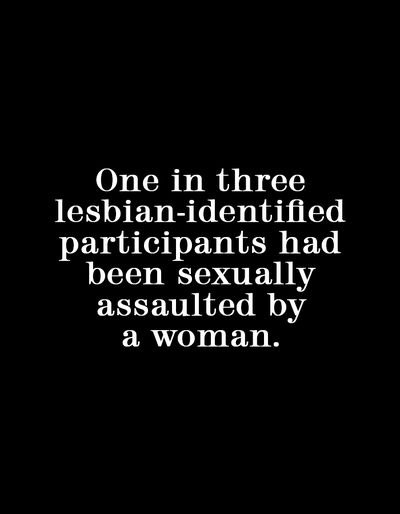
(Image credit: Hearst Endemic)
Stephanie Trilling, director of customs awareness and prevention services at the Boston Area Rape Crisis (BARCC), observes that for her queer female person clients who accept been assaulted by women, the first hurdle is simply agreement the set on equally rape. Since this scenario is rarely portrayed in the media or in educational programming, "it can exist especially challenging to identify their experience as violence," she says. "Many people accept a difficult time believing that a woman could be capable of inflicting violence on another person."
These gender norms can directly contribute to distrust of a victim's claims, says Lisa Langenderfer-Magruder, co-author of a recent study of LGBTQ intimate partner violence (opens in new tab) in Colorado. "When someone is confronted with a situation that doesn't quite fit that major narrative, they may question its validity," she says. All of this amounts to a culture in which most inquiry on partner violence focuses on heterosexual relationships. "So, in some ways, we're playing catch up."
Survivors are trapped in a cycle that delegitimizes their feel: first by downplaying the likelihood that it could happen at all, so by non validating information technology one time it happens, and finally past not analyzing the data—and therefore creating awareness—later on it does.
Woman-on-woman assail doesn't simply happen on higher campuses or at the easily of strangers—merely like their straight counterparts, queer women often experience sexual set on within relationships. Not that they have the aforementioned protections. All states passed laws against marital rape past 1993 (with some exceptions per state), but while some of the legal language employs the gender-neutral "spouse" to explain assaults within a marriage, other states, like Alabama (opens in new tab) and California (opens in new tab), default to "wife" for victim and "hubby" for attacker. The implication is that rape only occurs in heterosexual marriages or long-term partnerships—which is, of course, non the instance.
Sarah, 32, and her girlfriend had been dating long-altitude for virtually a twelvemonth—Sarah in California, her partner in N Carolina—when they decided they wanted to live together. Her partner was "very kind and very loving" earlier they moved in, Sarah says. But when after they'd hauled the concluding box into Sarah's Oakland apartment, Sarah learned that her new alive-in girlfriend suffered from bipolar disorder, and had a terrible temper. She became increasingly demanding and physically aggressive when Sarah would disagree with her, particularly about coin. The relationship started to feel similar a rollercoaster, with extreme highs and lows.
"At beginning, the sexual practice was good," says Sarah. "Just she always wanted more than what I could requite. One day she came home with a strap-on; if I loved her, she said, I would allow her to use it." Sarah wasn't interested. "It was merely something that I didn't like and didn't want," she says. She declined for months, her partner repeatedly pressuring her, until one night, Sarah's partner assaulted her with the strap-on. "Even though I was crying the whole time, she never stopped," Sarah recalls.
Sarah left their habitation that night and saturday crying in her car. As a child, she had been repeatedly sexually abused by an uncle —this assault felt just as violating. But she even so wasn't sure if she would call it rape. "Because we were together, I idea that she had the right to have sex with me the way she wanted," Sarah explains.
For the next vi months, Sarah's partner continued to rape her. She eventually mustered up the forcefulness to leave the relationship after her partner made a peculiarly decision-making demand: that Sarah financially support her. When Sarah reasoned that she was unable to, her partner attempted to striking her. She fled the flat, her partner following her outside with a knife just as she collection away.
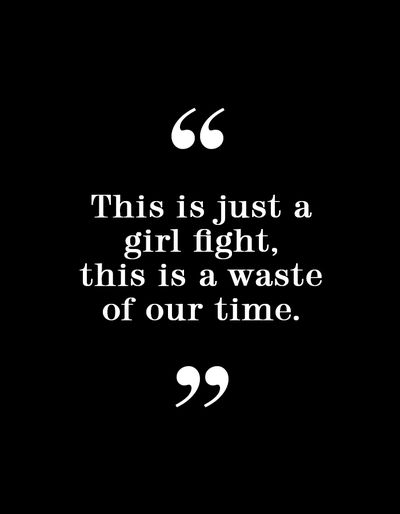
(Image credit: Hearst Owned)
For her liberty, Sarah paid dearly: She financed her partner'south moving expenses back to Northward Carolina. "I had to take out a loan so that I could pay for her to relocate." She never reported the assaults, nor has she spoken to her at present ex-partner since ending their relationship.
Sarah is not an outlier. "Many of our clients in same-sexual activity relationships are very hesitant to report at all," says Caitlin Kauffman, campus and community outreach coordinator for Bay Area Women Against Rape (BAWAR)—where Sarah eventually sought counseling. The consequences of coming forrard with sexual assault allegations are fraught for any sexual violence survivor. Simply for queer women, who already typically live, date, and brand friends inside a smaller network of other queer-identified women, the risks can be even more complex.
"Friend groups tin become divided and the survivor may fearfulness losing her only LGBTQ back up network," Kauffman says. "This can be specially challenging for survivors who live in areas where the community is small or there is a more hostile climate towards LGBTQ people."
There are larger, cultural implications of naming a aforementioned-sexual practice attacker. Even equally LGBTQ rights are on the ascension, "there's a fearfulness that accusing someone of assault inside your community, which is already marginalized, volition give guild cause to fear or marginalize you further," says Trilling. Queer women'southward historical legacy as "deviant" is not that far behind. In a climate where more than and more openly queer women are assuming public roles—and gaining acceptance in directly communities—naming one of your ain isn't merely interpreted equally a accuse on them. It'south an assault on your customs's hard-won progress to exist seen as equal.
Then, for women who might not exist "out," shame about their sexual orientation or a fright of being outted significantly hinders their ability to report. If y'all're closeted—or even semi-closeted—formally coming forrard with sexual assail allegations could mean compromising your professional or familial relationships by revealing your orientation. (The guarantee of keeping your chore as an LGBTQ American currently varies per state.) The downwardly economical spiral of losing i's job to report a aforementioned-sex activity rape that won't even be deemed legitimate is just not worth it—literally.
Weeks passed before Ella, 25, began to confide in her friends that she had been raped. While she didn't find them to be exactly unsupportive, at that place was still a consistent and major hurdle: "They are oftentimes surprised when they realize it was a woman who assaulted me."
In 2015, Ella was on a lunch date with a woman she had met at a eating house near her Berkeley apartment. After lunch, they found themselves very shut to Ella's abode—and she invited her date upward. Merely after they had consensual sex activity, Ella'south date refused to leave.
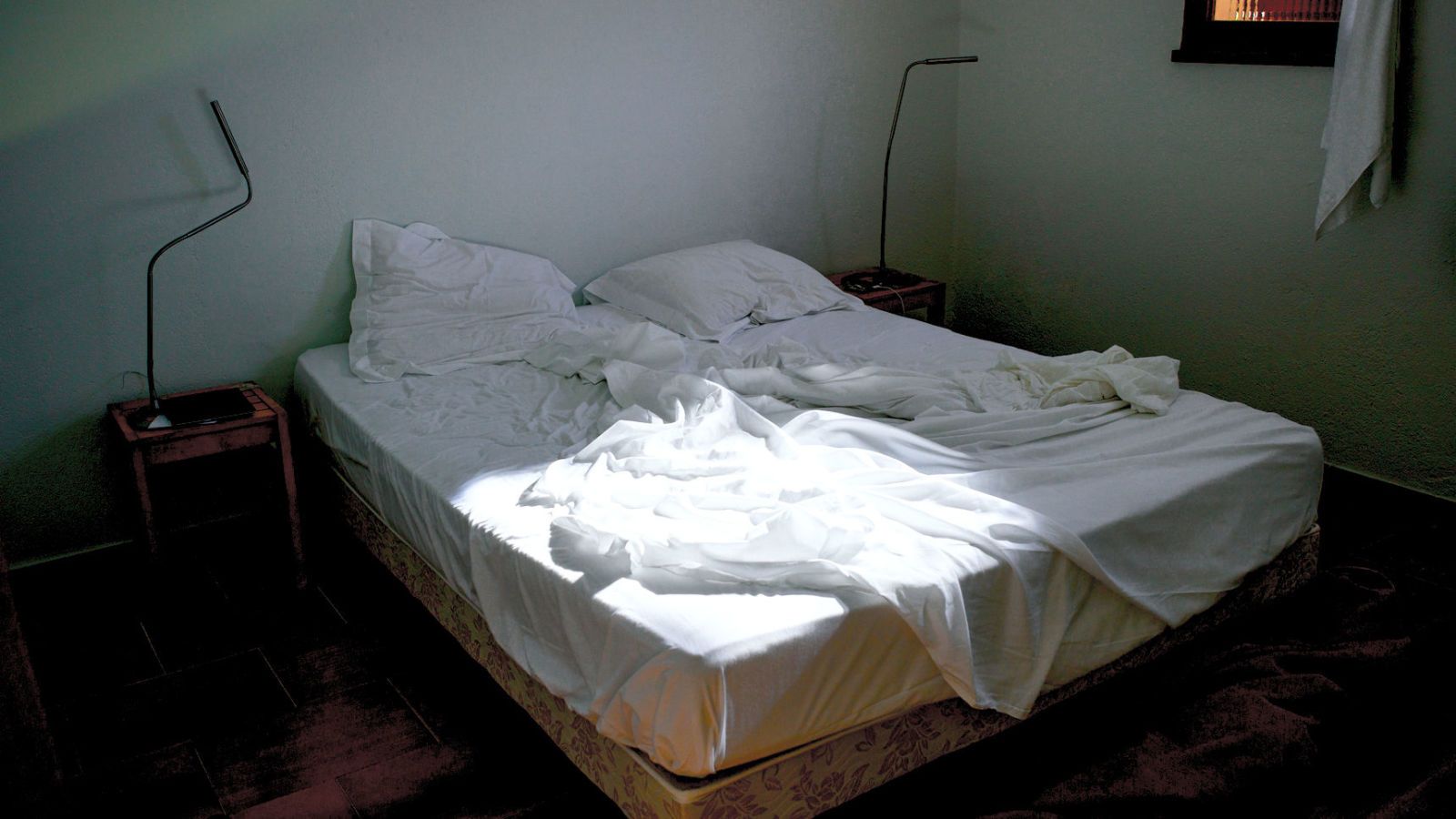
(Epitome credit: Hearst Endemic)
"I stayed upward all nighttime bold she would leave in the morning," she remembers, still haunted. "She didn't. She didn't sympathise 'no' after that." Ella'due south date then sexually assaulted her, took a shower, and finally left for work dorsum at the restaurant where they had met.
Ella never reported her attack either, and has since relied on herself and her friends—non the constabulary—to keep her safety. She ignored repeated texts from her assaulter insisting to "go far right." And and so her attacker started showing upwards at her home unannounced.
"Ane time a friend was dropping me off after tiffin, and she saw me before I saw her," she recalls. "I freaked out." Ella ran up the stairs to her apartment and locked herself in, all the while hearing her assailant call out her name. Ella's friend who had driven her immediately called to let her know he would not exist leaving until her rapist left the building. Somewhen, she did.

(Image credit: Hearst Owned)
For women trying to escape a female attacker, the procedure of calling the police, formally pressing charges, or seeking emergency shelter presents unique challenges. Domestic violence shelters typically focus on providing services to cisgender, heterosexual females and their children. "Then where a heterosexual female would have little concern nearly her male person partner existence allowed inside the facility, a female person in a same-sexual activity partnership may take valid concerns regarding the power of her abuser to enter the facility and perpetrate against her," explains Langenderfer-Magruder.
The obstacles don't terminate in that location. Experts say that this reticence to involve the government tin be traced dorsum to a lack of understanding around LGBTQ problems broadly. Data from a 2015 National Coalition of Anti-Violence Programs survey (opens in new tab) describes a " historically mistrustful relationship of the LGBTQ community and law enforcement," which has resulted in not only having claims of violence dismissed, but too victims being mistakenly arrested as perpetrators.
When female person victims of female assaults do pursue legal action, gender bias tin severely hinder their ability to accurately report sexual violence. "Oft, women in abusive same-sex relationships tell u.s.a. that even when they do call the police, they are treated dismissively," recounts Kauffman. "'Women aren't fierce.' 'This is only a girl fight, this is a waste of our time,' is a common attitude." According to the 2015 report past the National Coalition of Anti-Violence Programs, of LGBTQ individuals in Ohio who did written report intimate partner violence, 21 percent experienced "indifferent" reactions from police. Another 28 pct experienced hostility.
When Alaina shared her rapist'due south proper noun with the campus constabulary officer back in 2012, the tone of the chat inverse immediately. "She seemed like she was no longer taking my issue seriously, and asked me questions that I don't retrieve were important to my case, similar my own sexuality."
Alaina told the officer that she identified as bisexual and pushed for more details on pursuing legal activity. "She told me that if I went through with the example, information technology would be an on-campus issue and not much could exist done because I wasn't even a student, and it was my word confronting hers in a trial, and there was no longer whatever prove of the drugs she gave me in my organization." The officer asked Alaina to transport her copies of online exchanges with her attacker, only never followed up nearly her report. Alaina, now 24, never pressed charges and has had no advice with her attacker since 2012.
But there are exceptions to this widespread negligence. A now infamous example of queer rape brought national attention to the effect in 2005, when two young women were charged with assault and sexual battery for raping a 20-year-old pupil at Smith College in Northampton, MA.
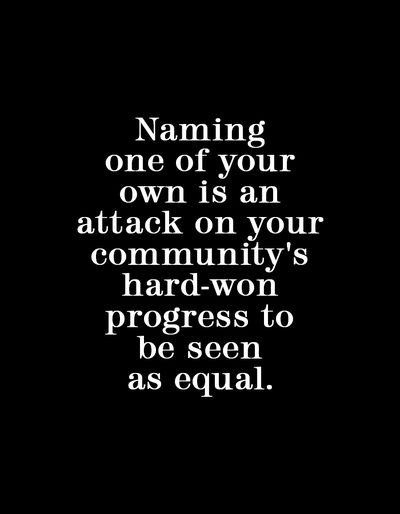
(Image credit: Hearst Owned)
The assistant commune attorney on the case, Susan J. Loehn, says the Northampton law performed a "thorough investigation" and treated the victim "in a sensitive manner." According to reports (opens in new tab), the victim alleged that what started as a consensual sexual encounter at an off-campus flat turned violent when she was placed in handcuffs, slapped across the face subsequently withdrawing her consent, slashed across the abdomen with a pocketknife, and sexually assaulted as 1 of the perpetrators held downward her legs. "There was an incredible amount of media attention virtually this case," Loehn, now executive managing director of Northwestern Children's Advancement Heart, remembers. Too much, in fact, for the case to make a real impact with a verdict. "This victim was overwhelmed past the media attention. Smith Higher is a small-scale college. People knew all of the parties involved. At that place were camera crews on her doorstep." The survivor ultimately decided to drop the charges. Like many sexual assault charges that die in a courtroom, the case now looms as a cautionary tale.
Over 10 years later, aforementioned-sex rape on higher campuses is just starting to be quantified on a national level. Haven (opens in new tab), an online sexual assail and awareness program that logs sexual assaults direct from students, works with self-reported data from over 800 colleges and universities. Oasis had never compiled a report on undergraduate women who have been assaulted by women, just teamed upward with MarieClaire.com to reveal new data: While the number of reported sexual assaults by women was low compared to assaults overall (just about 2.5 percent), the most striking difference came downwards to the likelihood of survivors to study the incident: xxx pct of women assaulted by another adult female told no 1, compared to 25 of women who didn't report an assault by a human being.
More information is needed at all levels—government, collegiate, and otherwise. All the experts we spoke to point to an overall famine of inquiry on intimate partner violence in queer female person communities as the biggest obstacle in developing more than accessible resources for survivors.
In the meantime, Langenderfer-Magruder asserts that language can exist a powerful place to get-go correcting this oversight. Omitting the standard "he" as perpetrator and "she" for victim in laws, educational materials, and even but full general discussion encourages awareness. "Research has clearly demonstrated that intimate partner violence does not happen in a solely heterosexual context—and the mode we discuss information technology should reflect that," she says.
It's been four years since Alaina was raped and she notwithstanding has no plans to pursue formal charges against her rapist. She says, unflinchingly, that she has moved on in other ways: She's chosen to change her proper noun, and has moved to a new city where she has pursued a successful freelance writing career, ofttimes writing nearly sexual assault within the LGBTQ community.
"I consider myself a vocal survivor," she says of educating those around her, 1 person, queer or direct, at a fourth dimension.
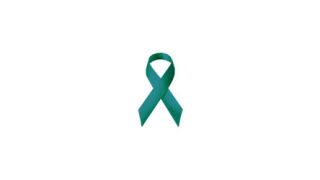
(Image credit: Hearst Endemic)
Source: https://www.marieclaire.com/culture/a19495/women-raped-by-women/

0 Response to "Girl Raped by Two Lesbians"
Post a Comment